DIFFERENCE OF LINEAR AND TACTILE MECHANICAL SWITCH – IN-DEPTH COMAPARISON
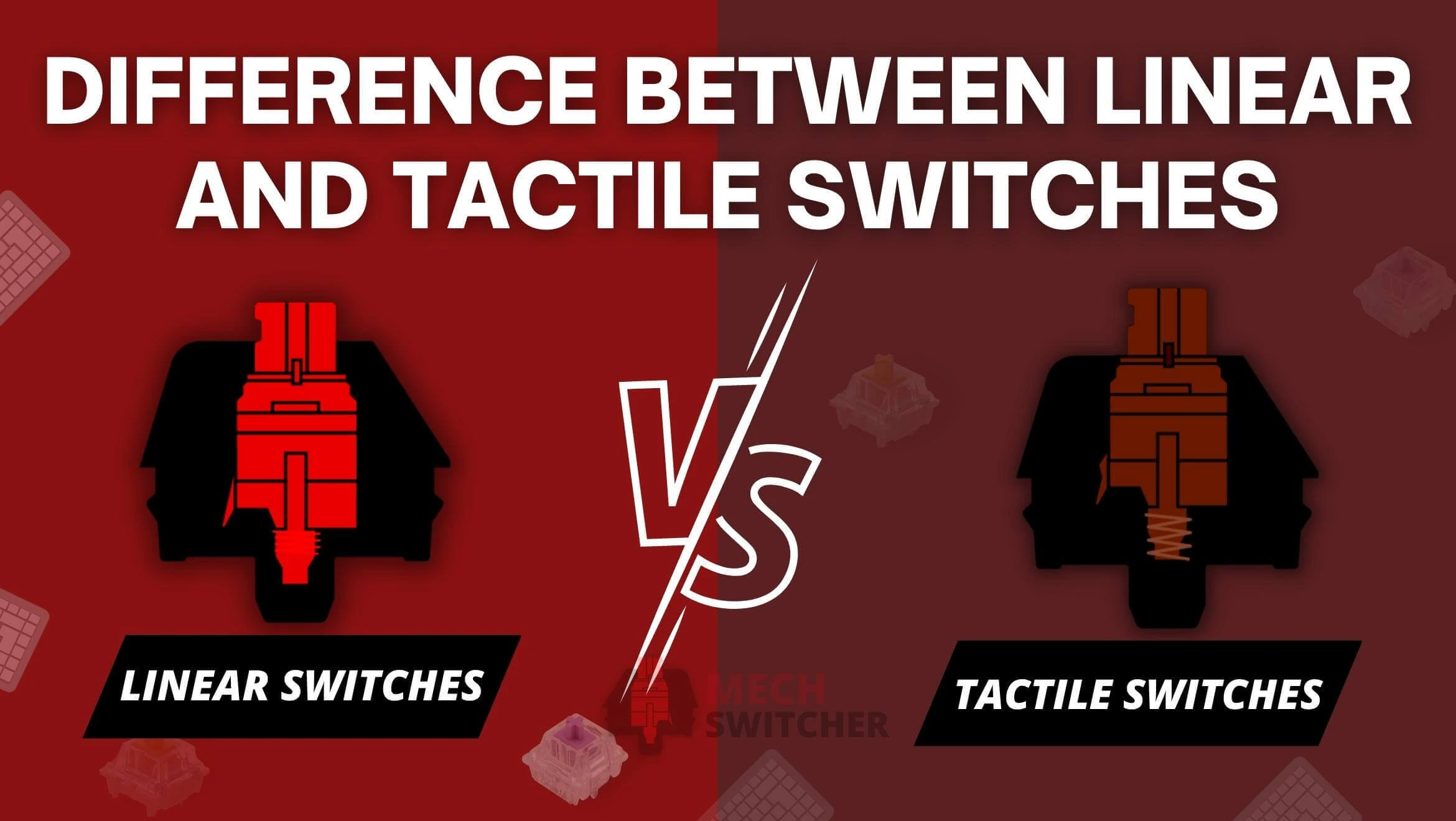
Newbies may have trouble understanding mechanical switches. Misguided switches will adversely affect performance. gamers, streamers, and typists carefully compare linear versus tactile differences for a better experience, versatility, durability, and responsiveness. To make decisions more straightforward, I have prepared an as right as a rain guide don’t need to be sick as a parrot after buying mechanical switches;
Difference of Linear VS Tactile Switches?
While holding both linear and tactile switches, there’s no difference you feel by the naked eye. But they offer unique characteristics to enhance performance while using mechanical keyboards. Although the significant difference is that some say linear mechanical switches are the first recommendation for gaming and tactile switches, great while typing. It depend on you, when choosing a mechanical switch.
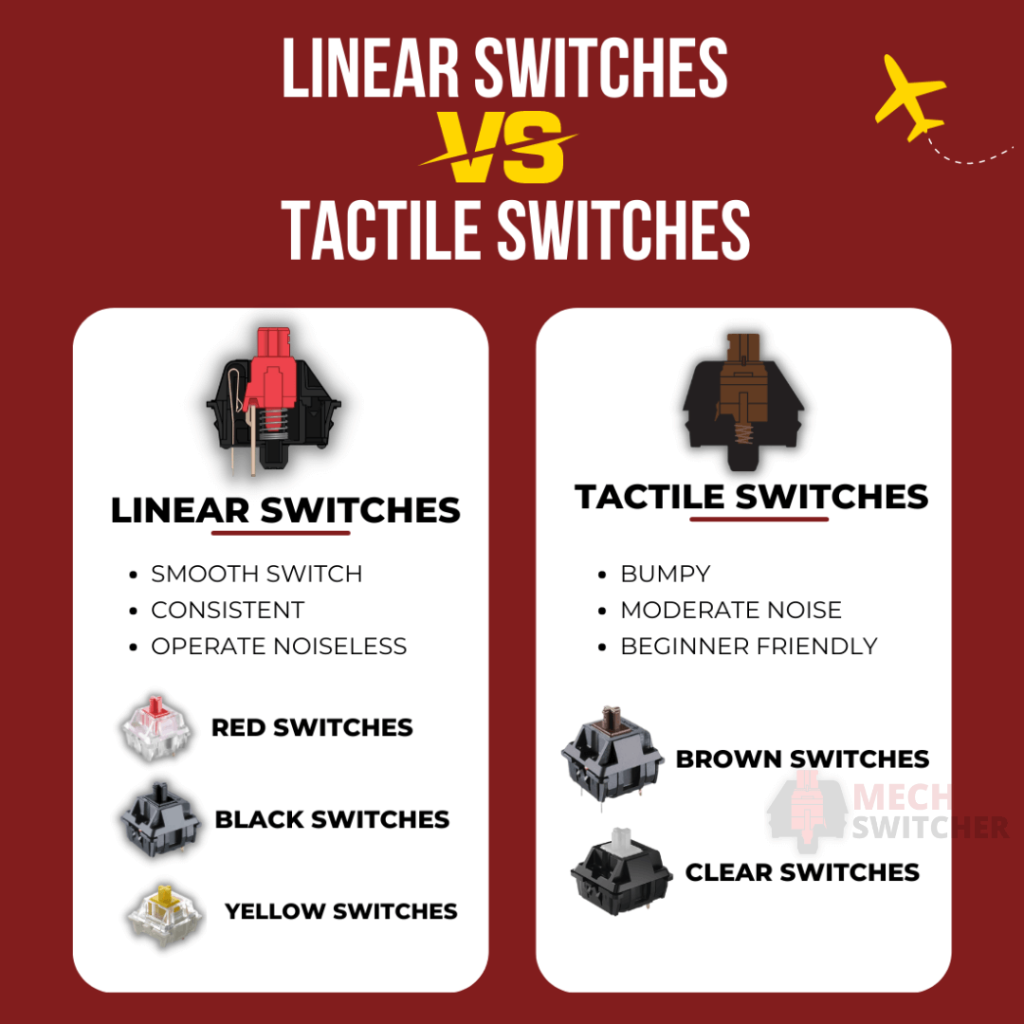
Linear Mechanical Switches
Linear switches are a type of mechanical switch popular due to their smooth butter working. Although, Consistently smooth keystrokes without tactile feedback. After all, linear mechanical switches are fit for the public who want to increase response time and love quiet and bump-free environments.
Furthermore, testing proves the qualities of linear switches make them ideal for serving in comparative games since there is no feedback, the speed is slightly slower, and the response time is slightly longer.
Compared to clicky and tactile mechanical switches, linear switches are quiet, enabling you have ability to stream content on various platforms and record videos in public places without causing frustration to others.
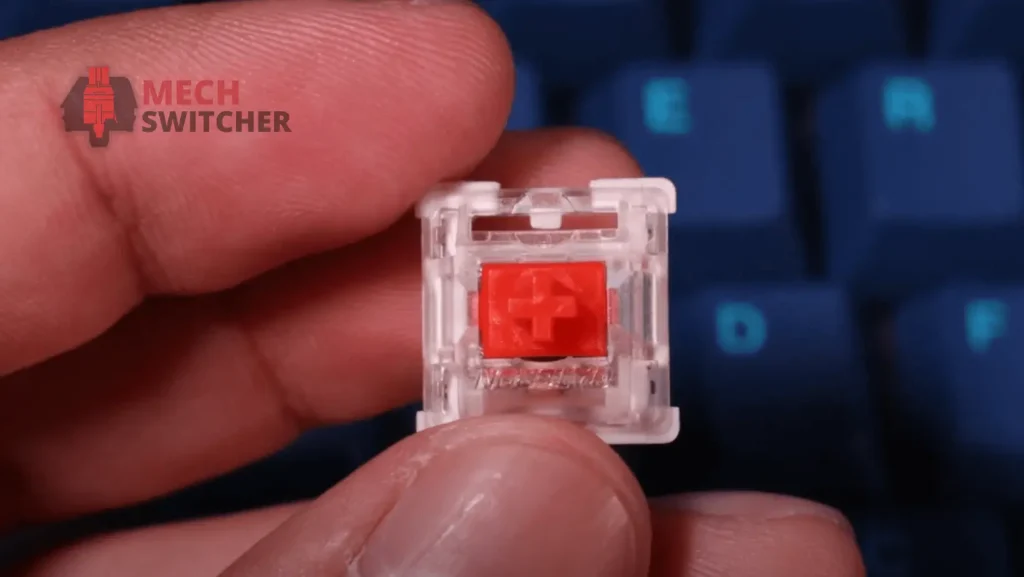
Also, In several colors, linear mechanical switches can be found and red will often be found. The consistent keystroke on linear switches gives smooth typing flows among programmers or fast typists, and professional gamers recommend them in competitive games.
Finding Linear Switches
By sound and tactile feel, linear switches make it easier to find mechanical switches;
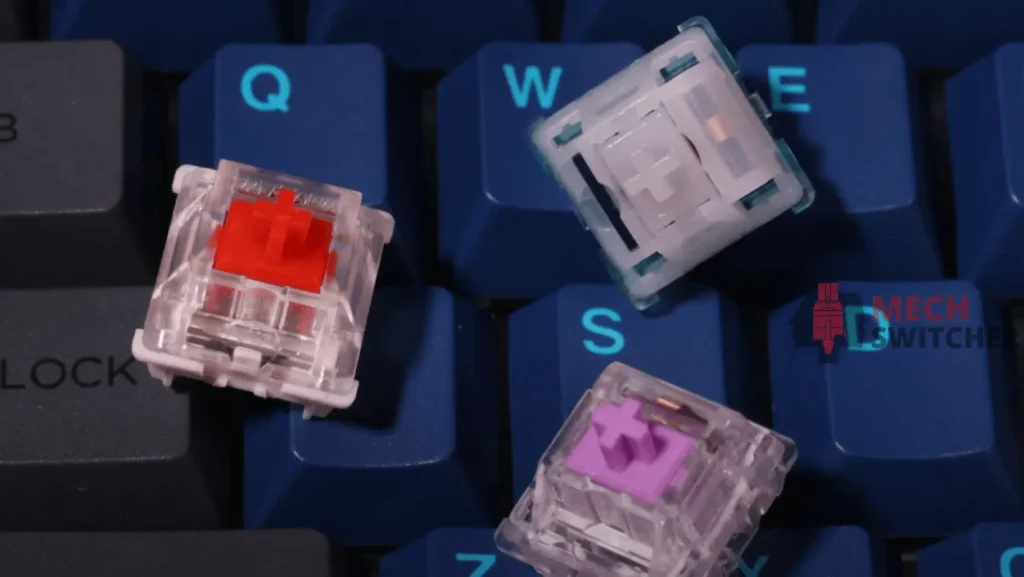
Check Tactility : Mechanical linear switches don’t have tactile bumps over keystroke. A linear switch is likely because the bottom comes out when you tap it, and mechanical switches do not have bumps. This mechanical keyboard gives a faster and smoother typing experience because it lacks tactile feedback.
Check Sound : As a result of a key being pressed, linear switches produce a quiet noise. You will hear a loud sound when you tap on clicky switches, while tactile switches have a moderate sound. The switch sound, however, cannot be heard while pressing.
The Tactile Mechanical Switches
Mechanical switches also come with small bumps and moderate noise. They’re called tactile switches because you get the feel after the keypress. Also, tactile switches laser focus to produce a small bump on every keystroke.
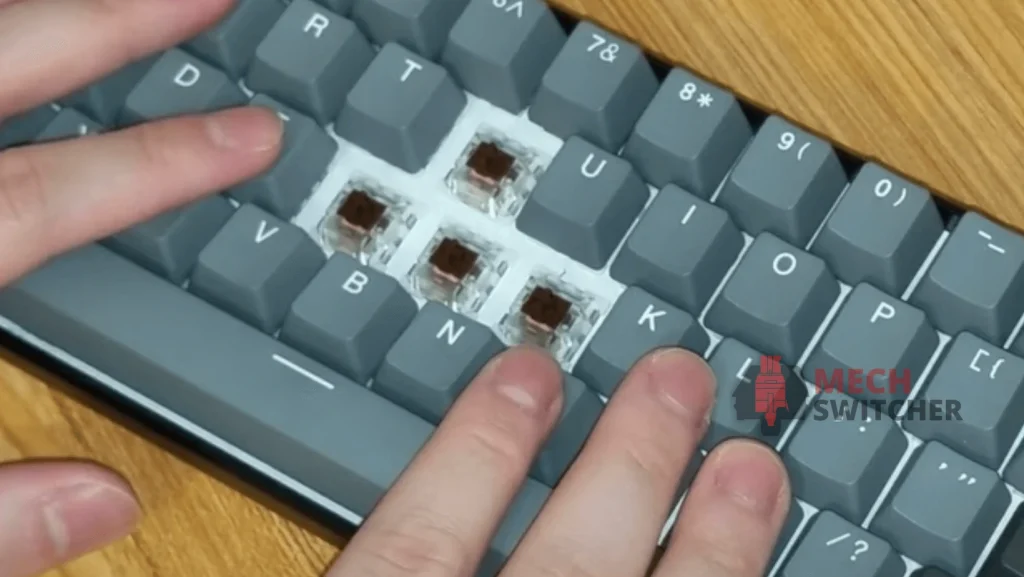
After all, as compared to linear switches, they relatively produce quiet noise. Tactile mechanical switches are famous among programmers and typists due to their great feedback. The fact that they’re not suitable for fun to use is because there’s no response level.
But the reality is tactile switches aren’t clicky switches, I know the feedback bump is the same, It is the sound that makes the biggest difference. A blue switch produces loud noise, while a tactile switch makes lower noise.
Identity Tactile Switches
The difference between linear and tactile switches might need to be clarified. That’s why identifying the switches are required to increase performance.
Check the Sound: The tactile switch’s sound is quiet compared to linear switches, and you can’t find them like linear switches. Let your hair down, take the tactile switch close to your ear and press it. While pressing, the stem goes down and you listen to a lit clicky sound.
After all, you should do the same thing with linear switches, but you can’t listen to any clicky sound. On the other hand, tactile switches have lower audible clicks than blue clicky switches.
Check the Tactile: After checking the sound, you can quickly feel the tactile bump, and I know the slight bump is the same as clicky switches. But compared to linear switches, you feel the bump after pressing the key that you can get in linear switches.
Another difference between tactile and linear switches
There’re lots of comparisons and miss guides about tactile and linear switches, you should also compare your favorite mechanical switch following comparison below;
Gaming Comparison Of Linear and Tactile Switches
For gaming, linear switches famouse over tactile, according to testing. After all, the reds, black, and silver providing a super smooth keystrokes. Although, linear switches give you a better sense of increasing speed and response.
Also, play competitive games with a tactile switch, the bump feeling can slow down and frustrate gameplay, and the tactile bump only feels relaxed sometimes. So, the tactile switches are suitable for FPS gaming because you don’t need to worry about whether the key is registered. The tapping goes off that key as fast as possible instantly.
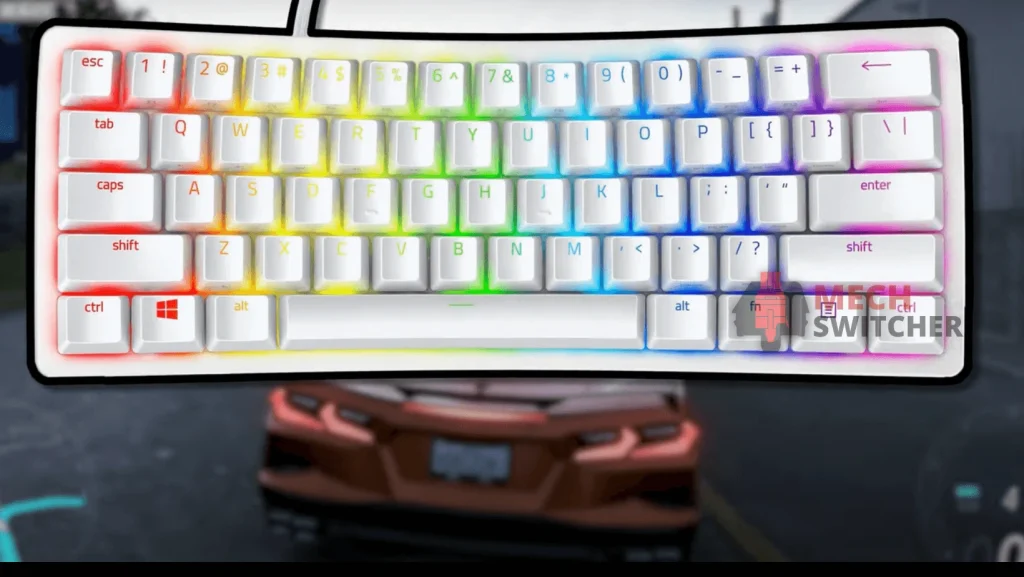
A linear switch additionally requires a high force to operate, while a tactile switch doesn’t. Linear switches are more responsive for gaming and cause less finger strain.
Cherry MX red switches are so popular among gamers who want a linear switch with a low actuation, speed, and smoothness.
Typing Comparison Of Linear and Tactile Switches
Tactile and clicky switches have linear edge switches when talking about typing comparison. In fact, I type a lot and the tactile switches give me a whale of a time. Also, the brown and clear mechanical tactile mechanical switches good for writing or general use, because they provide valuable feedback and small bumps with moderate sound.
On the other hand, linear switches do not produce tactile bumps and feedback. Moreover, it has a plastic stem that enhances typing performance, making Gateron link black switches ideal for typing. Tactile switches let you switch keys instantly when you feel a bump. It’s not necessary to wait until the key is bottomed out to move on once the keypress registers. This will help you type faster.
Noise Comparison
The noise of linear switches might be low compared to tactile switches because tactile switches designed for the bump found on the top of the switch make a clicky sound on each key press.
So, by adding noise to each key, users will have an easier time hitting it. However, linear switches are the best choice to minimize noise. These both mechanical switches are noiseless over clicky switch since the latter makes the most noise while on.
Tactile Feedback and Resistance level
I know the tactile feedback helps newer typists keep an eye on how they’re doing, and the linear switch was also designed with gateron yellow switches for newbies, depending on you, at the time of choosing. Tactile switches are suggested as the name due to tactile bump, but linear provides a smooth typing experience.
On the other hand, there needs to be more clarity about resistance levels. Everyman and his dog says tactile switches have low resistance levels compared to linear switches resistance. So, the point to be noted is that the cherry MX brown tactile switches have 55 cN (centinewton), and the cherry MX silver and black have a 60 cN resistance level.
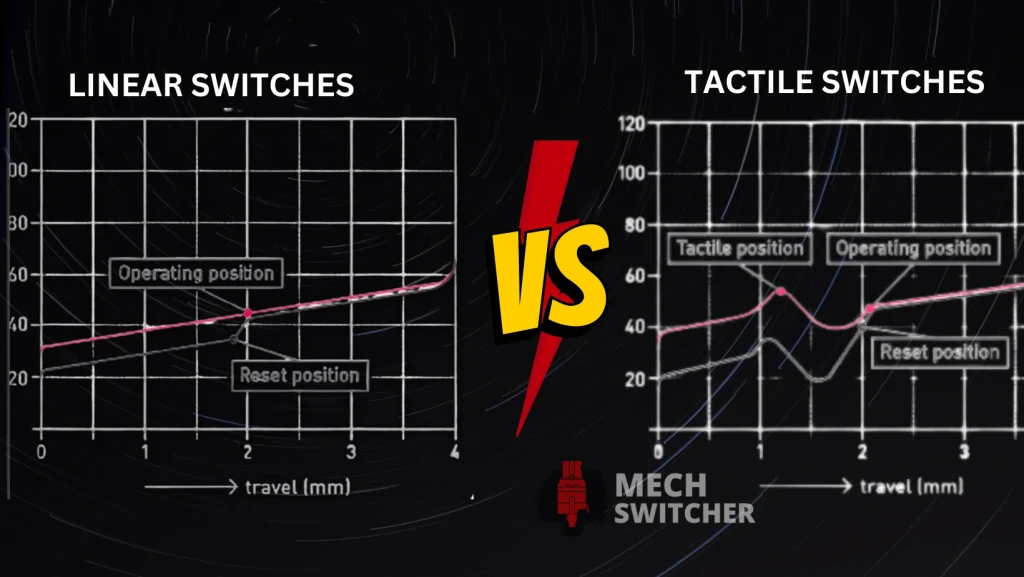
Do linear switches have more excellent resistance than tactile switches? The most common linear switch has lower resistance than tactile switches ( MX red or silver has 45 cN ). So, comparing the resistance level isn’t only true in some models and always refers to actuation types, not resistance levels.
Travel Distance and Popular Colors
Although, there are lots of misguides about linear and tactile switches’ travel distance. So, the linear switches have a lower travel distance than tactile switches. That’s why linear switches are faster than tactile switches.
On the other hand, MX brown switch and Cherry MX red and MX black have the same travel distance (2.0 mm pre-travel distance and 4.0mm total travel distance). Furthermore, the linear switches and tactile switches can quickly identify by colors,
- Linear: MX Black linear switch, MX Red linear switch, Gateron yellow linear switches
- Tactile: Brown, Grey, and Clear stems
